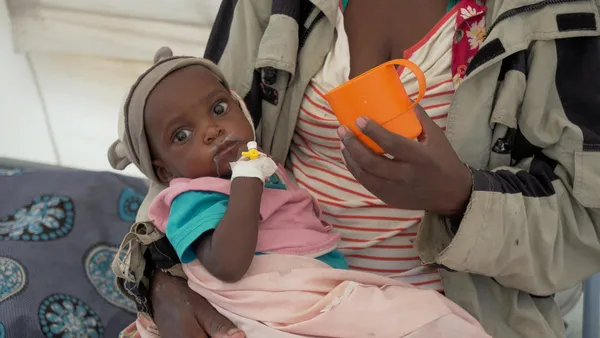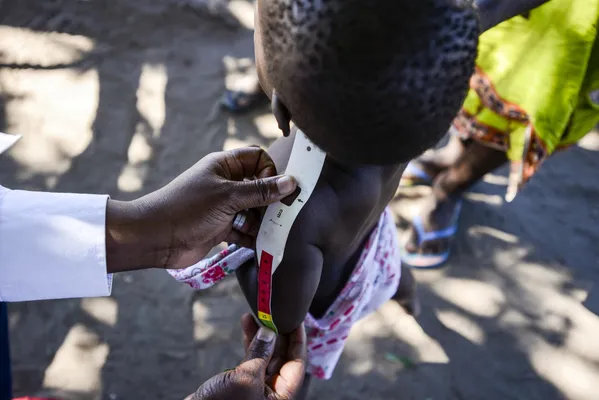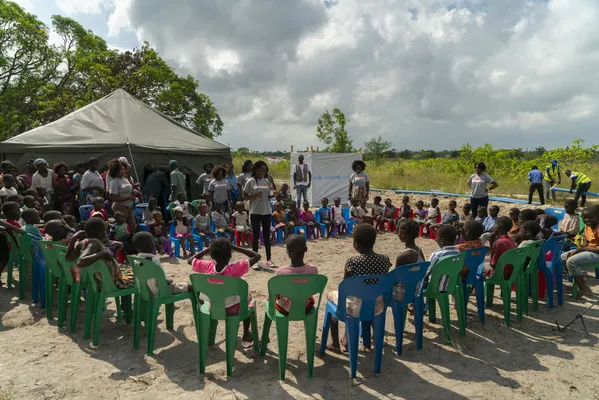Mozambique: Facing new challenges 6 months after Cyclone Idai and Kenneth
Children most vulnerable to food insecurity
Six months after Cyclone Idai, UNICEF estimates nearly 1 million people, including 160,000 children under five, are facing food shortages and a nutrition crisis, with conditions expected to worsen over the coming months. The dire situation is a direct result of the destruction by Cyclones Idai and Kenneth, which struck central and northern Mozambique in March and April this year. The two storms brought widespread flooding, the obliteration of almost 780,000 hectares (7,800 sq kms) of agriculture crops and the displacement of tens of thousands of families.
The impact of two cyclones hitting Mozambique in one season was devastating and unprecedented, however, it is only now that the residual effects of the disaster are really beginning to be felt.

More than 38,000 children could become severely malnourished by early 2020
The number of children under five facing ‘crisis’ levels of food insecurity is expected to rise to 200,000 in storm-affected areas by February 2020. According to UNICEF projections, around 38,000 children could become severely malnourished and at risk of death in the same amount of time.
“The agricultural devastation wrought by the two cyclones has made what were already high levels of child malnutrition even worse. Many children in disaster-affected areas do not have access to the nutritious food they need for their healthy development. Six months on, the prospect of further suffering is very real as we head into the lean season. More resources are urgently needed to support ongoing humanitarian efforts.” -Marcoluigi Corsi, UNICEF Representative in Mozambique.
Before the cyclones, 43 per cent of children in Mozambique were chronically malnourished or stunted. As one of the poorest countries in the world, multi-dimensional poverty means many children face conditions that prevent normal physical and cognitive development.

Malnutrition also leaves children at risk of developing other health conditions.
The usual seasonal increase in cases of malaria and diarrheal diseases are also expected. Many malnourished children will be made more vulnerable because of poor access to health services caused by the deterioration of rural roads during the upcoming rainy season.
Food and nutrition insecurity has additional implications for children’s safety.
According to the Food and Agricultural Organization (FAO), the price of maize has risen and remains higher compared to this time last year in the cyclone affected provinces of Cabo Delgado, Manica and Nampula. There is evidence that the price hikes are leading some families to adopt negative coping strategies such as pushing their children into early marriage or child labour.
For example, recent monitoring missions suggest that the rate of child marriage is rising. UNICEF partners have found cases in which the age of the girls being married off has dropped below the pre-emergency average of 13-14 years.

What is UNICEF doing to reach families and children?
In the past months, and thanks to the generosity of our donors, UNICEF and its partners have been working to reach children and families still reeling from the cyclones.
These efforts include:
- Screening more than 735,000 children under-five for acute malnutrition, with over 400,000 more to be screened by February 2020;
- Treating nearly 10,000 malnourished children with therapeutic food supplements;
- Implementing a joint voucher programme, which will assist at least 100,000 cyclone-affected people, as well as child grants for 10,000 households to alleviate immediate food insecurity; and
- Supporting innovative mobile brigades of the Mozambican Ministry of Health which reach remote communities with integrated health and nutrition services.
